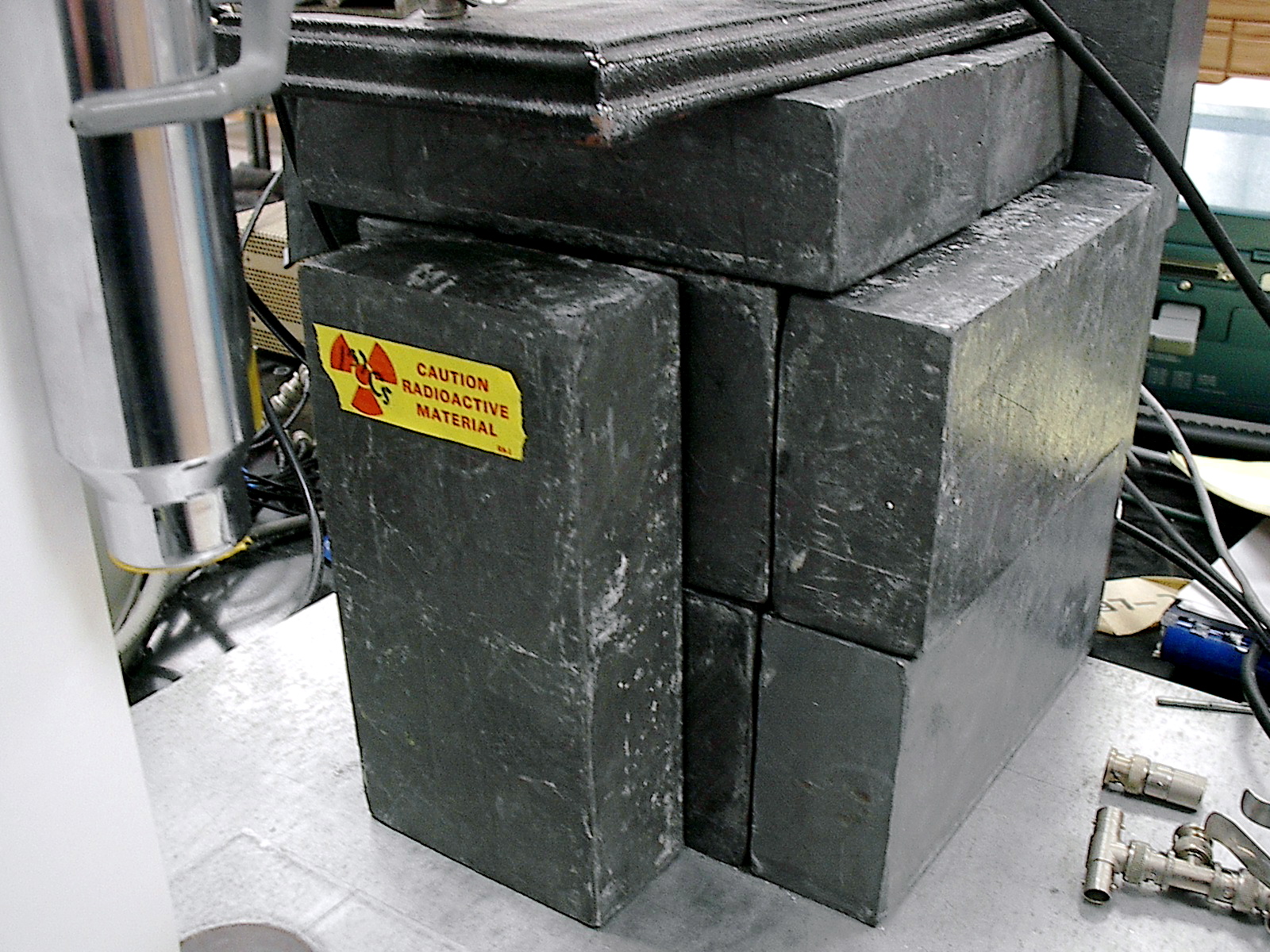Lead Castle on:
[Wikipedia]
[Google]
[Amazon]

 A lead castle, also called a lead cave or a lead housing, is a structure composed of
A lead castle, also called a lead cave or a lead housing, is a structure composed of
Lead castle pictures
Lead Nuclear physics Nuclear safety and security Radiation protection {{nuclear-tech-stub

 A lead castle, also called a lead cave or a lead housing, is a structure composed of
A lead castle, also called a lead cave or a lead housing, is a structure composed of lead
Lead () is a chemical element; it has Chemical symbol, symbol Pb (from Latin ) and atomic number 82. It is a Heavy metal (elements), heavy metal that is density, denser than most common materials. Lead is Mohs scale, soft and Ductility, malleabl ...
to provide shielding against gamma radiation
A gamma ray, also known as gamma radiation (symbol ), is a penetrating form of electromagnetic radiation arising from high energy interactions like the radioactive decay of atomic nuclei or astronomical events like solar flares. It consists o ...
in a variety of applications in the nuclear industry
Nuclear power is the use of nuclear reactions to produce electricity. Nuclear power can be obtained from nuclear fission, nuclear decay and nuclear fusion reactions. Presently, the vast majority of electricity from nuclear power is produced by ...
and other activities which use ionizing radiation
Ionizing (ionising) radiation, including Radioactive decay, nuclear radiation, consists of subatomic particles or electromagnetic waves that have enough energy per individual photon or particle to ionization, ionize atoms or molecules by detaching ...
.
Applications
Shielding of radioactive materials
Castles are widely used to shield radioactive "sources" ''(see notes)'' and radioactive materials, either in the laboratory or plant environment. The purpose of the castle is to shield people fromgamma radiation
A gamma ray, also known as gamma radiation (symbol ), is a penetrating form of electromagnetic radiation arising from high energy interactions like the radioactive decay of atomic nuclei or astronomical events like solar flares. It consists o ...
. Lead will not efficiently attenuate neutrons
The neutron is a subatomic particle, symbol or , that has no electric charge, and a mass slightly greater than that of a proton. The neutron was discovered by James Chadwick in 1932, leading to the discovery of nuclear fission in 1938, the f ...
. If an experiment or pilot plant is to be observed, a viewing window of lead glass
Lead glass, commonly called crystal, is a variety of glass in which lead replaces the calcium content of a typical potash glass. Lead glass contains typically 18–40% (by mass) lead(II) oxide (PbO), while modern lead crystal, historically a ...
may be used to give gamma shielding but allow visibility.
Shielding of radiation detectors
Plant radiation detectors that are operating in a high ambient gamma background are sometimes shielded to prevent the background swamping the detector. Such a detector may be looking for alpha and beta particles, and gamma radiation will affect this. Laboratory orhealth physics
Health physics, also referred to as the science of radiation protection, is the profession devoted to protecting people and their environment from potential radiation hazards, while making it possible to enjoy the beneficial uses of radiation. H ...
detectors, even if remote from nuclear operations, may require shielding if very low levels of radiation are to be detected. This is the case with, for instance, a scintillation counter
A scintillation counter is an instrument for detecting and measuring ionizing radiation by using the Electron excitation, excitation effect of incident radiation on a Scintillation (physics), scintillating material, and detecting the resultant li ...
measuring low levels of contamination on a swab or sample.
Construction
The castle can be made from individualbrick
A brick is a type of construction material used to build walls, pavements and other elements in masonry construction. Properly, the term ''brick'' denotes a unit primarily composed of clay. But is now also used informally to denote building un ...
s; usually with interlocking chevron edges to prevent "shine paths" of direct radiation through the gaps. They can also be made from lead produced in bespoke shapes by machining or casting. Such an example would be the annular ring castle commonly used for shielding scintillation counters.
A typical lead brick weighs about ten kilograms
The kilogram (also spelled kilogramme) is the base unit of mass in the International System of Units (SI), equal to one thousand grams. It has the unit symbol kg. The word "kilogram" is formed from the combination of the metric prefix kilo- (m ...
. Lead castles can be made of hundreds of bricks and weigh thousands of kilograms, so the floor must be able to withstand a heavy load. It is best to set up on a floor designed to carry the weight, or in the basement of a building built on a concrete
Concrete is a composite material composed of aggregate bound together with a fluid cement that cures to a solid over time. It is the second-most-used substance (after water), the most–widely used building material, and the most-manufactur ...
slab. If the castle is not put directly on such a floor, it will require a suitably strong structure to safely support it.
Notes and references
External links
*Lead castle pictures
Lead Nuclear physics Nuclear safety and security Radiation protection {{nuclear-tech-stub